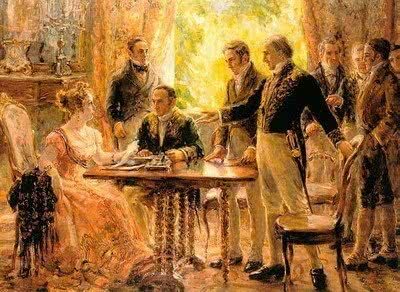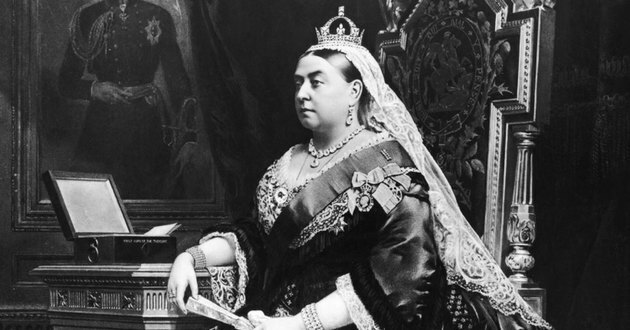Renoir he was a very important French artist of the late 19th century. He had great prominence in painting and, along with other artists, continued a new way of brushing, which became known as impressionism.
He appreciated the beauty of life and brought optimism, harmony and tranquility to his canvases by painting many outdoor scenes. He even said once:
For me, a picture must be something lovely, joyful and beautiful, yes, beautiful. There are already too many unpleasant things in life. Why do we invent more?
Renoir's Biography
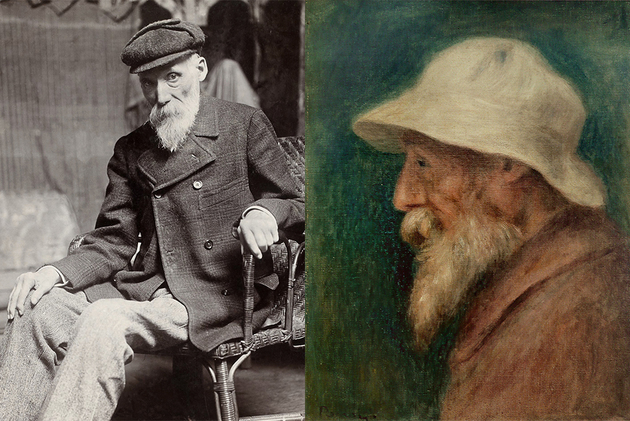
Pierre-Auguste Renoir was born in 1841 in Limoges, France. When he was four years old, he moved to Paris with his parents and six siblings. His mother, Marguerite Merlet, was a seamstress and his father, Léonard Renoir, a tailor.
In high school, he stood out for his ease in singing and ability to draw.
To help the family financially, at the age of thirteen, he started as an apprentice in a porcelain painting studio in the Levy's workshop. There he remained until he was seventeen. Afterwards, he dedicated himself to painting fabrics and fans.
In 1861, Renoir meets Charles Gleyre, who would become his master of painting the following year. That's when he also enters the School of Fine Arts in Paris.
At that time he became friends with Claude Monet (1840-1926), Alfred Sisley (1839-1899) and Frédéric Bazille (1841-1870), who would also become important painters.
Together, they explored colors and luminosities on outdoor painting afternoons in the Fontainebleau woods.
His inspirations in art were Eugene Delacroix (1798-1863) and Édouard Manet (1832-1883), which were already causing an uproar in the artistic scene.
In 1864, he meets Lise Tréhot, one of the painter's first models and later his mistress.
The work Lise with umbrella (1867) was one of the canvases produced when the artist was still completing his studies at the Escola de Belas Artes. So, as the frame "Mère" Anthony's Inn (1866).
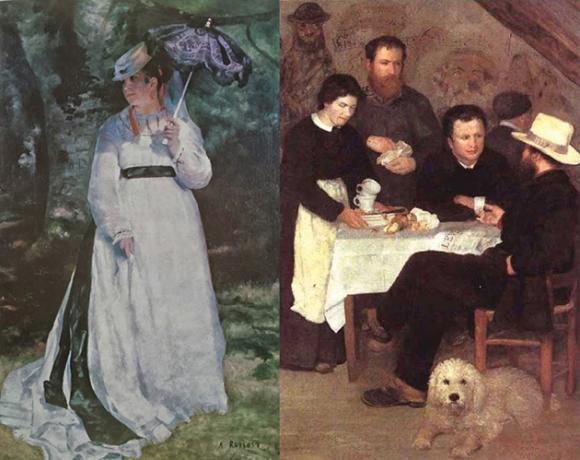
In 1869, Renoir and Monet consolidated their painting styles, more fluid, with characters brushed in sketches and valuing sunlight. This way of painting was later known as impressionism.
With the beginning of Franco-Prussian War, Renoir was called up to serve in the army. There, he became ill and did not participate in combat. However, he was greatly disturbed by the disappearance of his friend Bazille, who died at age 29.
In 1871, with the Paris Commune, the artist decides to exempt himself from the political scene, not assuming a position and "floating in the tide of events".
In 1873, Renoir and other independent artists created an exhibition project. The inauguration took place in April 1874, with more than 30 participants, including painters, sculptors and engravers.
It was in this exhibition that the screen print, sunrise, by Monet, was exhibited, naming the impressionist movement. Other exhibitions of the group also took place in 1876, 1877 and 1879.
He was married in 1880 to model Aline Charigot and had three children with her. During this period, now 40 years old, the artist goes in search of new stimuli and inspirations and travels to Spain, where he comes into contact with the work of Diego Velásquez.
From 1883 to 1887, the painter suffered a creative crisis and had some depressive episodes. But soon after, he lives a good phase of professional recognition, having one of his paintings sold to the French Government in 1892.
Renoir suffered for a long time from the pain caused by rheumatism. The first serious crisis was in 1888, which left him with facial paralysis. From then on, arthritis will be with you until the end of your days.
So much so that, in 1897, the artist began to show mobility difficulties and in 1910 he needed to tie brushes in his hands to continue painting. At that time, he was already well known and won a special room at the Venice Biennale.
In the last years of his life he remains active despite illness and pain.
He began to venture into sculpture, with the help of young artists Richard Gieino and Louis Morel, who worked following Renoir's instructions.
He painted a bouquet of flowers on the day of his death, December 3, 1919, in Cages-sur Mer, France.
Main works by Renoir
Below are some of the most important paintings by Pierre-Auguste Renoir, presented in chronological order, where you can see the creative process and transformations in the artist's way of painting.
1. In Summer (1868)

- Technique: oil on canvas;
- Dimension: 85 x 59 cm;
- Location: National Gallery, Berlin, Germany.
2. La Grenouillère (1869)

- Technique: oil on canvas;
- Dimension: 66 x 81 cm;
- Location: National Museum of Fine Arts in Sweden.
3. The Parisian (1874)

- Technique: oil on canvas;
- Dimension: 160 x 160 cm;
- Location: Cardiff National Museum, Wales.
4. Female Nude in the Sunlight (1875)
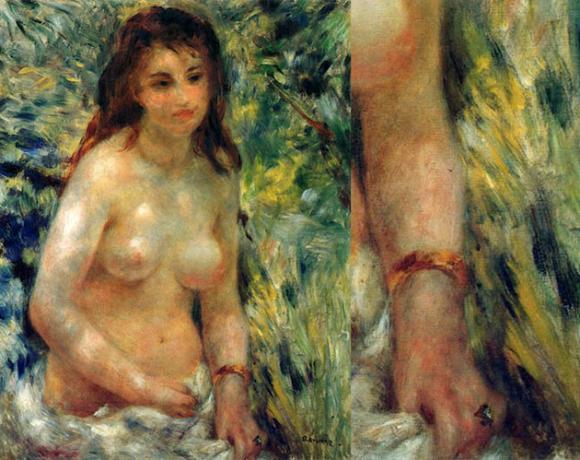
- Technique: oil on canvas;
- Dimension: 81 x 65 cm;
- Location: Orsay Museum, Paris, France.
5. Le Moulin de la Galette (1876)

- Technique: oil on canvas;
- Dimension: 131 x 175 cm
- Location: Orsay Museum, Paris, France.
6. Girl with watering can (1876)

- Technique: oil on canvas;
- Dimension: 100 x 73 cm
- Location: National Art Gallery, Washington, USA.
7. Rowers' Lunch (1880-81)
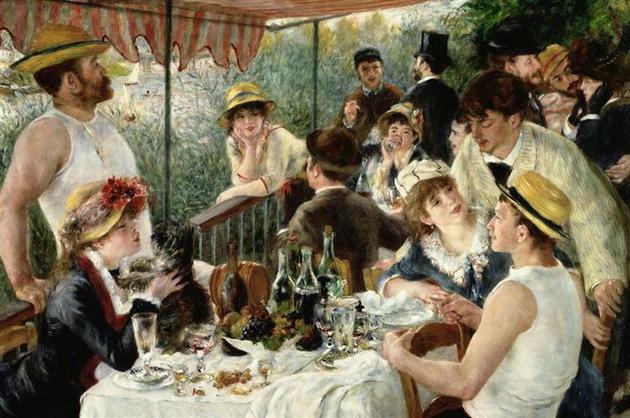
- Technique: oil on canvas;
- Dimension: 130 x 173 cm
- Location: National Art Gallery, Washington, USA.
8. Wargemont Girls' Afternoon (1884)
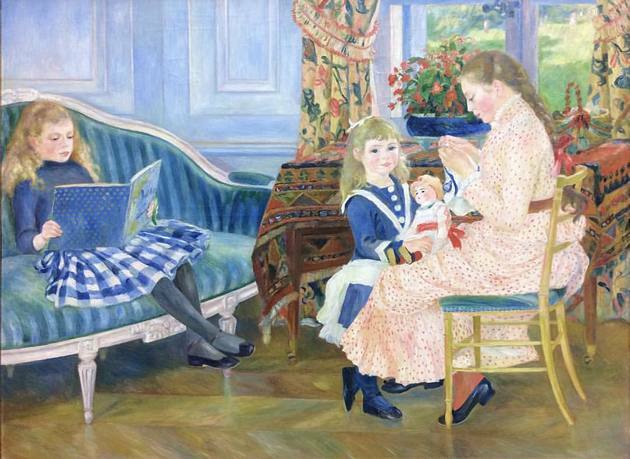
- Technique: oil on canvas;
- Dimension: 130 x 170 cm;
- Location: National Gallery, Berlin, Germany.
9. The great bathers (1884-1887)
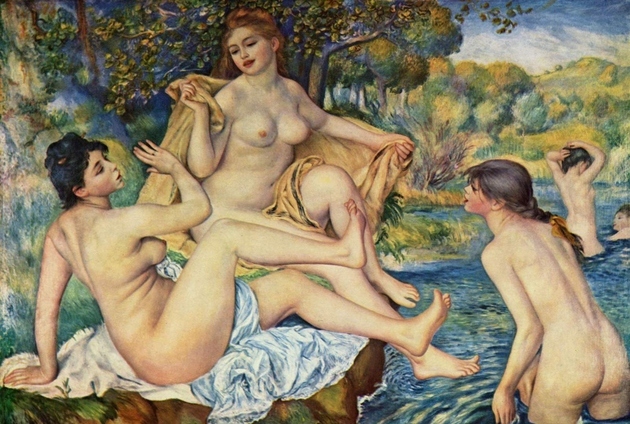
- Technique: oil on canvas;
- Dimension: 115 x 170 cm;
- Location: Philadelphia Museum of Art, USA.
10. Gabrielle with a Rose (1911)
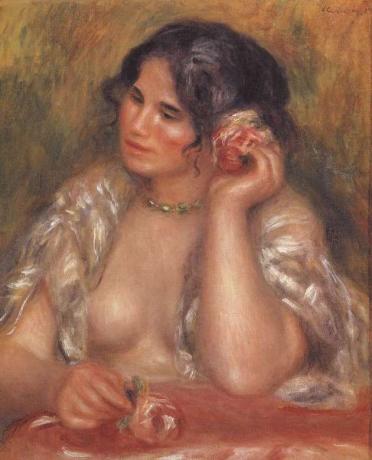
- Technique: oil on canvas;
- Dimension: 55 x 47 cm;
- Location: Orsay Museum, Paris, France.
Curiosities about Renoir
- When he was a student of Charles Gleyre, the master once reproached him by saying that the young man painted only for fun, to which Renoir promptly replied, "You can be sure I wouldn't paint if you didn't. amused."
- Renoir lived and produced his work at the same time as the advent of photography and this new language strongly influenced the painter's work.
- Renoir's brother Edmond Renoir was a journalist and had many positive reviews of his brother's work.
- On Sundays, Renoir attended the famous ball Moulin de la Galette in order to find models for his paintings.
- His wife, Aline Charigot, was portrayed holding a puppy on screen rowers' lunch.
- Pierre Renoir, the artist's first son, became a famous actor.
- The second son, Jean Renoir, was a celebrated film director.
- Claude Renoir, the youngest son, was in ceramics.
- Claude's birth served as a stimulus for Renoir, who is now 60 years old and quite weakened by the disease.
- Renoir stated that he didn't go a day without painting. He left a legacy of over a thousand works.


